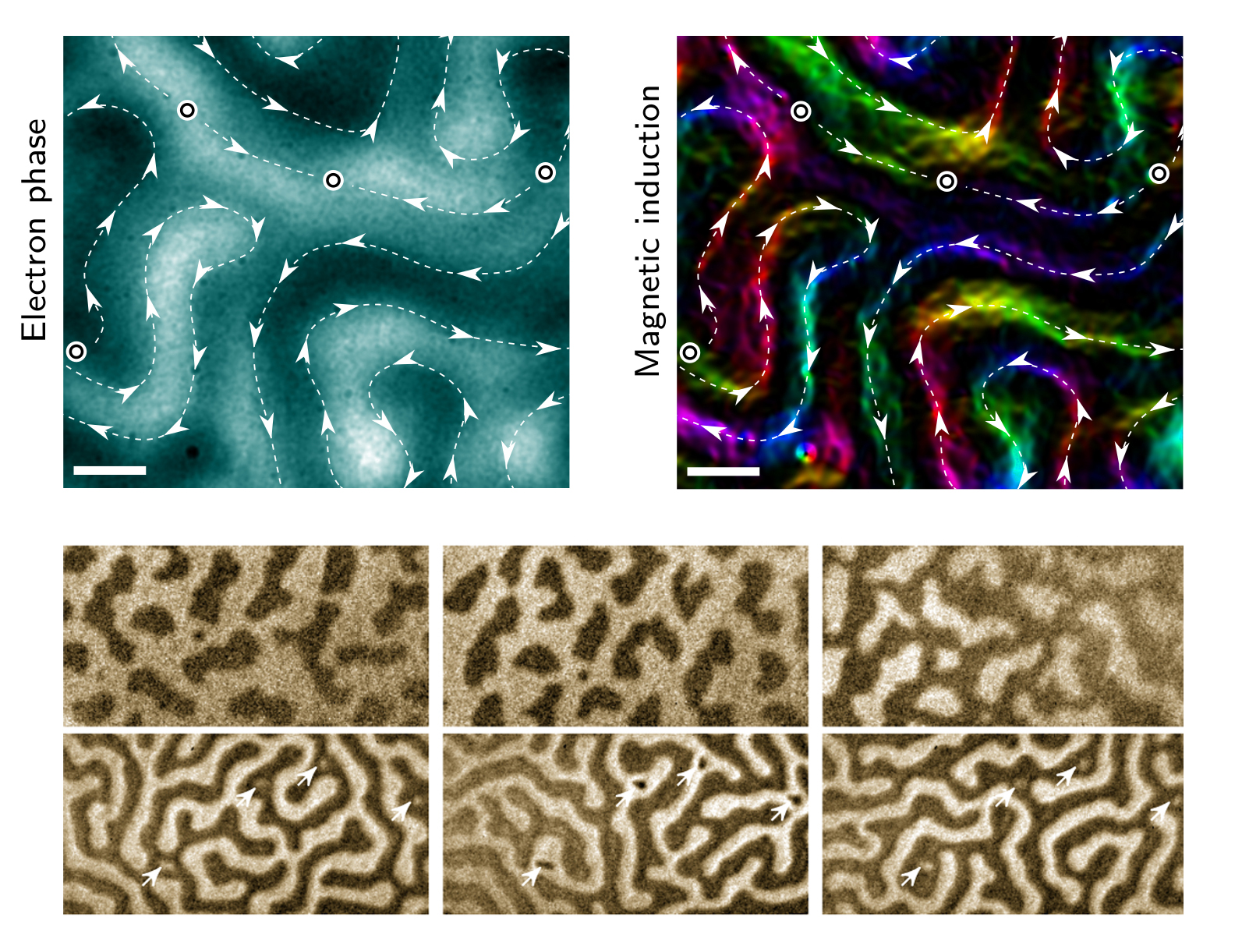Modern computer circuits commonly use silicon wafers based on a crystalline form of silicon, with a regularly ordered structure. Amorphous materials, however, are easier to make and could be manufactured to overcome some of the limitations of crystalline materials for spintronics applications.
In this study, scientists have confirmed a special property known as “chirality” (left- or right-handedness) in the domain walls of multilayer materials with disordered structure. The material samples were an amorphous alloy of gadolinium and cobalt sandwiched between ultrathin layers of platinum and iridium, which are known to strongly impact neighboring spins.
The research team enlisted a unique, high-resolution electron microscopy technique (Lorentz microscopy) at Berkeley Lab’s Molecular Foundry to image the magnetic properties of the samples. They combined these results with x-ray magnetic circular dichroism (XMCD) spectroscopy at ALS Beamlines 6.1.2 and 6.3.1 to confirm the nanoscale magnetic chirality in the samples.
The experiments revealed a dominant chirality in the magnetic properties of the domain walls that could possibly be flipped to its opposite. Such a flipping mechanism is a critical enabling technology for spintronics and variant fields of research that are based on the electron spin.
The team hopes that their work may help drive such research, where “topologically protected” (stable and resilient) spin textures called skyrmions could potentially replace the propagation of tiny domain walls in a material and lead to smaller and faster computing devices with lower power consumption than conventional devices.

R. Streubel, C.-H. Lambert, N. Kent, P. Ercius, A.T. N’Diaye, C. Ophus, S. Salahuddin, and P. Fischer, “Experimental Evidence of Chiral Ferrimagnetism in Amorphous GdCo Films,” Adv. Mater. 30, 1800199 (2018), doi:10.1002/adma.201800199.
Adapted from the Berkeley Lab news release, “Non-Crystal Clarity: Scientists Find Ordered Magnetic Patterns in Disordered Magnetic Material.”